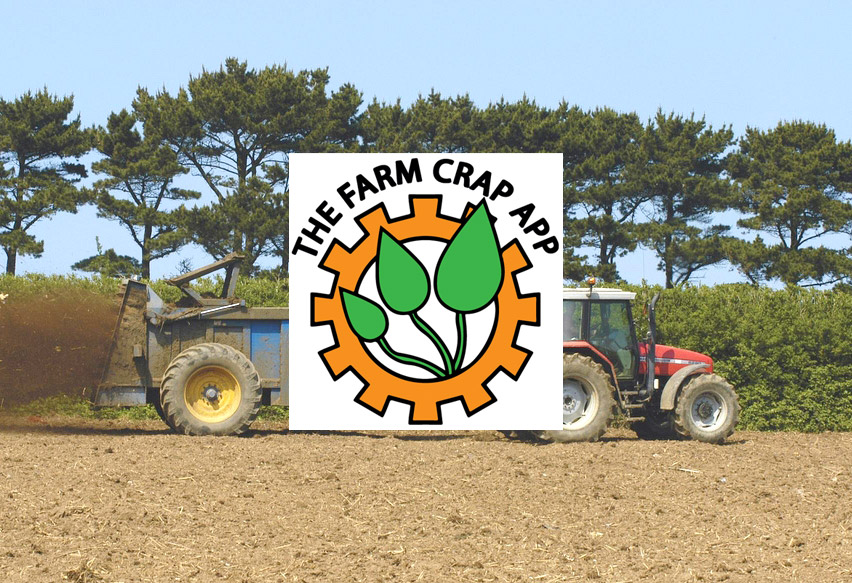Savings made on fertiliser without reducing production can have a significant impact on the bottom line.
Fertiliser use on grazing livestock farms
Why should I care?
In 2016/17 fertilisers made up 17-22% of a conventional grazing livestock farms total variable costs in the south west (FBS, 2018). How does your farm compare to the table on the right of the page?
The cost of fertilisers in the UK have also risen further and faster than prices on the international market (NFU, 2015).
Fertilisers also have environmental implications. Before the introduction of Nitrate vulnerable Zones in 2002, 70% of nitrate present in England’s freshwater originated from diffuse pollution from agricultural land. Although reduced, diffuse nitrogen pollution from agriculture remains a significant issue (Doring et al, 2013).
It is estimated that in the UK the annual cost of diffuse pollution from agricultural is £238 million (Jacobs UK Ltd 2008, Natural England, 2014)
| Enterprise | Fertilisers Percentage of total Variable costs
(£ per farm hectare) |
|
|---|---|---|
| Average | Premium | |
| Dairy | 9% | 9% |
| Lowland cattle and sheet farms | 18% | 18% |
| SDA cattle and sheep farms | 17% | |
| LFA cattle and sheep farms | 17% | 19% |
| Mixed cropping cattle and sheep farms | 22% | |
| Organic dairy farms | 1% | |
| Organic lowland cattle and sheep farms | 3% | |
What can I do?
As many farms over fertilise, farms can reduce the rate of fertilisation without affecting yield (Fezzi et al, 2008). However, if too little is utilised then production will suffer.
Visit the Swarm Hub to find out how to increase the efficency of your fertiliser applications
Livestock manures are a valuable source of nutrients. Making best use of these nutrients can contribute to better profit margins and minimise pollution risks on your farm.
Visit Think Manures to discover how you can make manure work for you and download the Crap App to find out how much you could save
Economic models of animal production indicated that when fertiliser usage was less than 200kg/ha, grass clover swards were profitable when compared to nitrogen fertilised grass swards (Defra, 2003). Topp & Doyle also found White clover and lucerne were to be consistently more profitable than grass-based systems, receiving 200 kg N ha.The inclusion of clover has added benefits in terms of protein, minerals, high digestibility and intake relative to grass (Defra, 2003).
Discover the benefits of clover here
Multispecies swards produce higher herbage dry matter yields with lower nitrogen inputs than the common perennial rye grass ley (Grace et al, 2018).
A study by Nyfeler et al. (2009) found that a monoculture ley required 450kg N ha-1 to produced a comparable amount of dry matter as a multispecies sward (50-70% legumes) fertilised with 50kg N ha-1. That’s an additional 400kg N ha-1 (Grace et al, 2018). With nitrogen currently at 79p/kg, that’s a difference of £316.
The Toolbox of Multi-Species Swards (TOMS) project is working to develop a mix suitable for conditions present on Cornish farms.
External Resources
Swarm Hub
The SWARM Knowledge Hub is a resource management web information service for farmers and growers in south west England.
Crap App Pro
The Farm Crap App helps farmers and growers value the nutrients found in organic manures.
References
Doring, T.F., Baddeley, J.A., Brown, R., Collins, R., Crowley, O., Cuttle, S., Howlett, S.A., Jones, H.E. McCalman, H., Measures, M, Pearce, B.D., Pearce, H., Roderick, S., Stobart, R., Storkey, J., Tilston, E.L., Topp, K, Watson, C. Winkler, L.R., Wolfe, M.S. (2013) Using legume-based mixtures to enhance the nitrogen use efficiency and economic viability of cropping systems. Available at https://www.agricology.co.uk/resources/using-legume-based-mixtures-enhance-nitrogen-use-efficiency-and-economic-viability (Accessed 9th February 2019)
Farm Business Survey. 2018. Farm Business Digest South West England. Rural Business School
Fezzi, C., Rigby, D., Bateman, I.J., Hadley, D. and Posen, P., 2008. Estimating the range of economic impacts on farms of nutrient leaching reduction policies. Agricultural Economics, 39(2), pp.197-205.
Grace, C., Boland, T.M., Sheridan, H., Lott, S., Brennan, E., Fritch, R. and Lynch, M.B., 2018. The effect of increasing pasture species on herbage production, chemical composition and utilization under intensive sheep grazing. Grass and Forage Science, 73(4), pp.852-864.
Jacobs UK Ltd. 2008. Environmental Accounts for Agriculture: Final Report. Report to Department for Environment Food and Rural Affairs, Welsh Assembly Government, Scottish Government, Department of Agriculture and Rural Development (N. Ireland). London, Jacobs UK Ltd. SFS0601.
Natural England. 2014. Microeconomic Evidence for the Benefits of Investment in the Environment 2 (MEBIE2) (NERR057) Available from: http://publications.naturalengland.org.uk/publication/6692039286587392 (Accessed 26th February 2019)
NFU 2016. What’s the story on high fertiliser prices? Available at https://www.nfuonline.com/sectors/crops/crops-news/whats-the-story-on-high-fertiliser-prices/ (Accessed 9th October 2019)
Nyfeler, D., Huguenin‐Elie, O., Suter, M., Frossard, E., Connolly, J. and Lüscher, A., 2009. Strong mixture effects among four species in fertilized agricultural grassland led to persistent and consistent transgressive overyielding. Journal of Applied Ecology, 46(3), pp.683-691.

